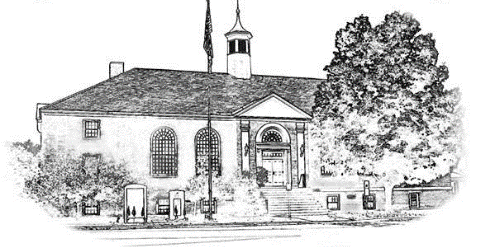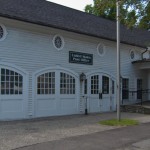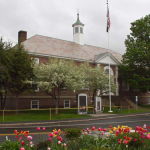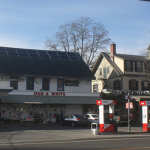10 Smart Routes to Bicycle Safety
Protect Your Head. Wear A Helmet.
Never ride a bicycle without a helmet. The National Highway Traffic Safety Administration (NHSTA) and the U.S. Consumer Product Safety Commission (CPSC) recommend that bicyclists wear a helmet that complies with the CPSC standards.
Bicycle helmets can reduce head injuries by 85 percent. Select a helmet that fits snugly and sits flat on the head.
For children, use the extra padding that comes with the helmet to ensure a proper fit. This padding can be removed as the child’s head grows.
Assure Bicycle Readiness.
Make Sure Your Bicycle is Adjusted Properly.
Make sure you can stand over the top tube of your bicycle. Adjust your bicycle to fit you (see Owner’s Manual).
Before using your bicycle, check to make sure all parts are secure and working well. The handlebars should be firmly in place and turn easily. Your wheels must be straight and secure.
Add a carrier to the back of your bicycle if you need to carry things.
Stop It. Always Check Brakes Before Riding
Always control your speed by using your brakes. If your bicycle has hand brakes, apply the rear brake slightly before the front brake. Always keep your brakes adjusted. If you cannot stop quickly, adjust your brakes.
Consult your Bicycle Owner’s Manual or have a bicycle shop adjust the brakes. When your hand brake levers are fully applied, they should not touch the handlebars. Each brake shoe pad should wear evenly and never be separated more than one eighth inch from the rim.
Ride slowly in wet weather and apply your brakes earlier – it takes more distance to stop.
See and Be Seen
Wear clothes that make you more visible. Always wear neon, florescent, or other bright colors when riding a bicycle.
Avoid Biking at Night
It is far more dangerous to bicycle at night than during the day. Most bicycles are equipped for daylight use and need to be adapted for nighttime use.
If you must ride at night, you should do the following:
- Ride with reflectors that meet CPSC’s requirements. These should be permanently installed on bicycles for daytime use also. If a carrier is added, make sure the rear reflector remains visible.
- Add the brightest lights you can find to the front and rear of your bicycle.
- Wear retro-reflective clothing or material – not just white or florescent – especially on your ankles, wrists, back, and helmet. Only ride in areas familiar to you. Brightly lit streets are best. Always assume you are not seen by a driver. Young children should NOT ride at night.
Stay Alert. Always Keep A Lookout for Obstacles in Your Path
Stay alert at all times. Watch out for potholes, cracks, expansion joints, railroad tracks, wet leaves, drainage grates, or anything that could make you fall.
Before going around any object, scan ahead, and behind you for a gap in traffic. Plan your move, signal your intentions, and then do what you planned. If you are unsure, or lack the skill to handle an especially rough area, pull off to the right side of the road and walk your bicycle around the rough area.
Be especially careful in wet weather and when there could be ice or frost on your path.
* Cross all railroad tracks at a 90 degree angle and proceed slowly. * Use special care on bridges.
Go With the Flow. The Safe Way is The RIGHT Way
Ride on the right side in a straight predictable path. Always go single file in the same direction as other vehicles. Riding against traffic puts you where motorists don’t expect you. They may not see you, and may pull across your path, or turn into you.
Young children, typically under the age of nine, are not able to identify and adjust to many dangerous traffic situations, and therefore, should not be allowed to ride in the street unsupervised. Children who are permitted to ride in the street without supervision should have the necessary skills to safely follow the “rules of the road.”
Check for Traffic. Always be Aware of The Traffic Around You
Over 70 percent of car-bicycle crashes occur at driveways or other intersections. Before you enter any street or intersection, check for traffic. Always look left-right-left, and walk your bicycle into the street to begin your ride.
If already in the street, always look behind you for a break in traffic, then signal, before going left or right. Watch for left or right turning traffic.
Learn Rules of the Road. Obey Traffic Laws
Bicycles are considered vehicles. Bicyclists must obey the same rules as motorists. Read your State drivers≠ handbook, and learn and follow all the traffic signs, laws, and rules for operating a vehicle on the road.
Always signal your moves. Be courteous to pedestrians and other vehicle operators.
Never wear headphones while riding as they impair your ability to hear traffic.
Become familiar with the accommodations that are available for bicyclists in your area. These include bicycle lanes and routes as well as off road paths. Take advantage of these whenever possible.
Don’t Flip Over Your Bicycle. Wheels Should Be Securely Fastened
If your bicycle has quick release wheels, it is your responsibility to make sure they are firmly closed at all times and to use the safety retainer if there is one.
Check your wheels before every ride, after any fall, or after transporting your bicycle. Read your Owner’s Manual for instructions and follow them. If you are even slightly confused about what “firmly closed” means, talk to your bicycle dealer before you ride your bicycle.



















